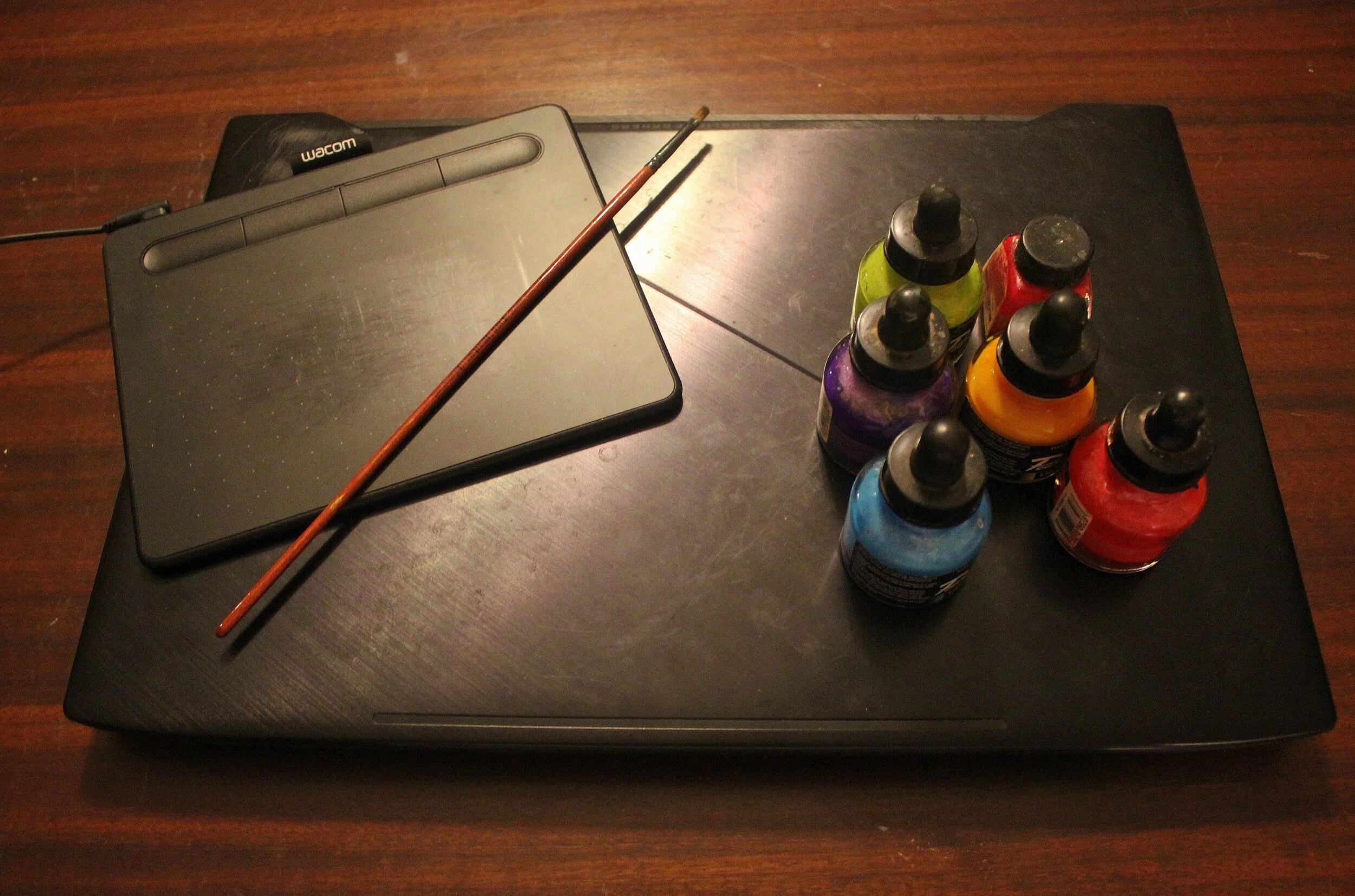Watercolour Basics
Always Make A Plan
Because of the difficulty of watercolour painting, you should get into a habit of having a plan from the beginning. I sketch out my artwork in light pencil on the paper. When you are starting out, keep it simple and slowly increase the difficulty as you progress. You want to increase your confidence and not get stuck. The more you paint, the better your technique.
Correcting Mistakes
It is more difficult to fix mistakes with watercolour then other mediums, but there are solutions. One method is to use either gouache white paint, but only for a small area. When it is dry you can paint over it. With gouache paint you have to be careful, as it gives a texture to the painting, because it will mix with the colour you are added and change it slightly. For touch ups and small mistakes it works well. You can minimise a mistake if the area is still wet, by lifting away the paint with your brush or dabbing with tissues. Quickly use your paint brush to take away as much paint as needed. Adding water helps to dilute the mistake and then you clean up the mistake. I prefer using a tissue instead of the brush.
Water
Is the element that makes watercolour so difficult to master. It requires patience and practice to start to see results. When you begin you have to deal with unique challenges, that only watercolour artists deal with. Wet on wet is a difficult skill to master, but will practice you develop a technique. One common thing that happens for new beginners is having the colour go outward and create an unwanted border in manner of a bloom. This happens when using too much water or not waiting for the paint to dry. Adding paint too soon can create that affect if it is your intention. The strength of the paint depends how much water you add. When learning to mix paint make a colour mixing chart. With palette paint it is easy to lose track of the amount needed to make a certain colour, with ink paint it can be easy to overdo it.
Achieving Strong Tones
This takes time, but it is a simple process. You paint one layer and wait for it to dry. Then do another layer until you have built up the layers to the level of vibrancy that you want. If you are painting a background a medium sized artwork could take a day or more. You have to make sure the layer is dry or else this will not work. Always use watercolour paper and try to buy the best brand available. The paper has to be able to absorb the layers of watercolour or else it starts to disintegrate. Depending on gsm you will have to be careful adding to many layers or else the paper will warp.
White Paint
There is no white watercolour paint. Guache white paint is used for little touch ups. For larger areas that you want to leave white, there is masking fluid or tape to cover the area that you wish to stay unpainted. You are using the paper to give you a white colour.
Keep Your Paints and Area Clean
Always cover you paints and paper. It is easy for things to stick to the paints and brushes which later you paint with, this adds an unexpected layer to your artwork. Always continuously clean your brushes. In my case, once I left my paper uncovered. My dog, who loved erasers, having just come from outside, climbed on the table and added an interesting addition in the form of paw prints going up the artwork.



